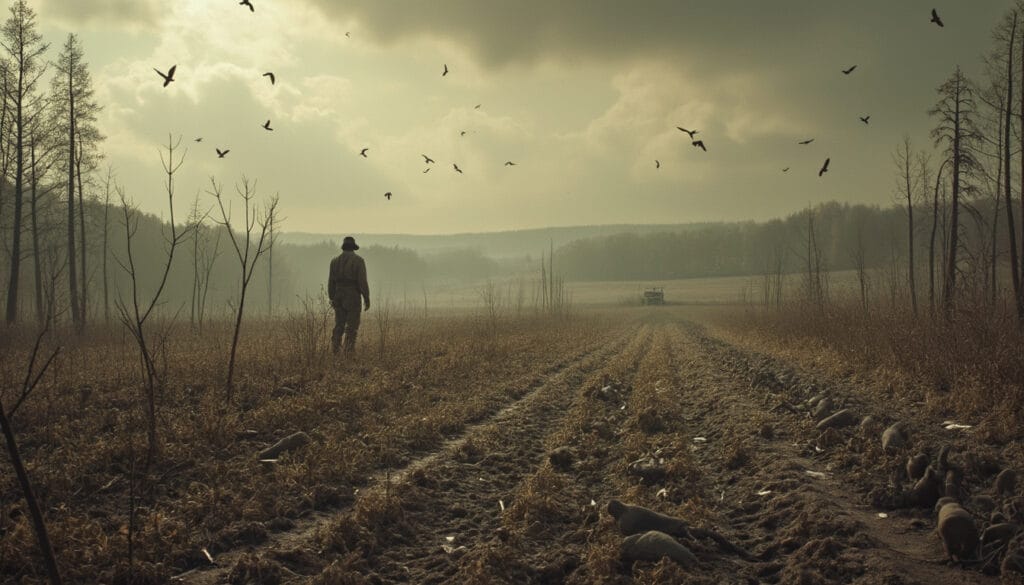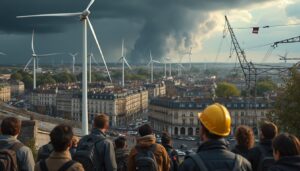Five years ago, California was devastated by the Camp Fire, the deadliest fire in the country in a century. Despite new legal requirements imposed to protect homes, the January 2025 deadline has been largely missed. Then, entire neighborhoods of Los Angeles were engulfed by flames, claiming dozens of lives and destroying thousands of structures.
In response, Governor Gavin Newsom ordered Cal Fire to finalize these long-awaited regulations. The new fire risk maps, updated after more than a decade, reveal that 5.1 million Californians now live in the most vulnerable areas. This phenomenon is a direct reflection of the effects of climate change, where dry, windy conditions promote devastating fires even in winter. The new regulations impose strict standards, such as fire-resistant windows and brush-free zones around homes.
California is facing an unprecedented crisis regarding wildfires, directly impacting the lives of its residents. According to recent studies, nearly one Californian in eight lives in areas classified as the highest risk. This alarming situation stems from several factors, including climate change, rapid urbanization, and delays in implementing effective regulations.
What is the extent of fire risk in California?
For five years, California has suffered devastating losses due to wildfires, with major events like the Camp Fire being the deadliest in the country in a century. In 2025, an update to building regulations had been promised to protect homes in high-risk areas, but these rules were not finalized in time. In January 2025, a new fire in Los Angeles resulted in the deaths of dozens of people and destroyed thousands of structures, highlighting the urgency to act.
In February, Democratic Governor Gavin Newsom ordered the State Board of Forestry and Fire Protection, also known as Cal Fire, to finalize these long-delayed regulations. This executive order also called for the creation of new fire hazard maps, updated for the first time since 2011 in certain locally managed areas.
What climatic factors exacerbate wildfires?
The climate in California has radically changed, making wildfires more frequent and intense. The new danger maps released by Cal Fire show that the areas at high and very high risk have increased by 168% since 2011. This increase is attributed to improved computing capabilities and more detailed data collection on weather patterns, vegetation, and fire behavior.
Frank Bigelow, Deputy Director of Community Preparedness and Fire Mitigation at Cal Fire, explains that the new data allows for better determination of the ember spread distance and its ability to ignite vegetation. Additionally, Daniel Swain, a climatologist at the University of California, points out that periods of extreme drought have become longer and more frequent, increasing the potential for catastrophic fire spread.
How do the new regulations protect residents?
The new maps now include two new categories of hazard zones: moderate and high. Property owners located in high zones must comply with new building rules, such as installing fire-resistant windows and siding. Those in very high zones must also maintain a circle of 30 meters around their property free of flammable brush and dead trees.
For new developments in these areas, regulations require the establishment of multiple evacuation routes, adequate water supply, and vegetation-free spaces to prevent fire spread. Gregory Pierce, a professor of urban planning at the University of California, Los Angeles, emphasizes that 33% of the homes destroyed during the Altadena fires are now located in high or very high zones.
What are the differences between hazard and risk?
It is crucial to differentiate hazard and risk when it comes to fire management. Frank Bigelow from Cal Fire explains that the maps indicate the level of hazard based on long-term climatic and landscape factors, while risk can change rapidly based on property maintenance, such as the size of brush.
A fire cannot be precisely predicted in terms of location or size, but these maps allow for an assessment of the likelihood that a fire will occur in a given area. With adequate fortification measures for homes, it is possible to significantly reduce risk even in very high hazard areas.
What are the impacts of climate change on wildfires?
Climate change plays a central role in increasing the frequency and intensity of wildfires in California. Droughts are longer and more severe, creating ideal conditions for the rapid spread of fires. Daniel Swain from the University of California points out that these dry periods are often accompanied by strong winds, thus increasing the potential for catastrophic spread of fires.
Globally, similar wildfires occur in regions such as South Korea, Japan, and Chile. In 2024, researchers from the University of Tasmania found that the intensity and frequency of the most extreme fires on Earth have doubled over the last two decades, underscoring the urgency to act in the face of this phenomenon.
How does technology help manage wildfires?
Technological advances have significantly improved wildfire management. Thanks to sophisticated databases and more accurate predictive models, authorities can better anticipate and respond to fires. For example, the creation of new danger maps by Cal Fire uses detailed data on weather patterns and vegetation to identify high-risk areas.
Initiatives such as the mobilization of nearly 400 incarcerated firefighters to fight fires in Los Angeles also demonstrate the importance of bolstering human capacities alongside technological innovations. These efforts are detailed in articles such as Unmissable: nearly 400 incarcerated firefighters mobilized as Los Angeles struggles against wildfires.
What local initiatives are emerging to counter wildfires?
In the face of increasing risks, several local initiatives are developing to better protect communities and the environment. For example, projects aimed at strengthening fire-resilient infrastructure are underway, incorporating renewable energy technologies like wind energy to provide sustainable and reliable energy sources. These initiatives are discussed in reports such as California demystifies a major myth about renewable energy.
Moreover, collaboration between local authorities and climatology experts allows for the development of more effective prevention strategies. This includes proactive management of flammable vegetation and the creation of buffer zones between homes and forests. Research projects like those presented in A new database strengthens forest fire management strategies play a crucial role in improving fire management methods.
What are the future challenges for fire management in California?
Despite considerable efforts, several challenges remain in managing wildfires in California. The main challenge is the continuous adaptation to the effects of climate change, which makes it increasingly difficult to predict and prevent fires each year. Additionally, rapid urbanization in high-risk areas places more pressure on emergency services and local infrastructure.
Another major challenge is coordination among the different levels of governance, from local authorities to federal agencies. Improved communication and cooperation are essential for effective resource management and fire response. Innovative solutions, such as the use of advanced databases and mobilization of additional personnel, are essential to meet these challenges.
Finally, it is crucial to educate and raise awareness among residents about best practices for fire prevention. Information campaigns on property maintenance and emergency preparedness can significantly reduce individual and collective risks. These initiatives are supported by recent studies and articles such as Unmissable: Nearly 400 incarcerated firefighters mobilized as Los Angeles struggles against wildfires, which highlight the importance of community readiness.
#>
Articles similaires
Thank you!
We will contact you soon.














